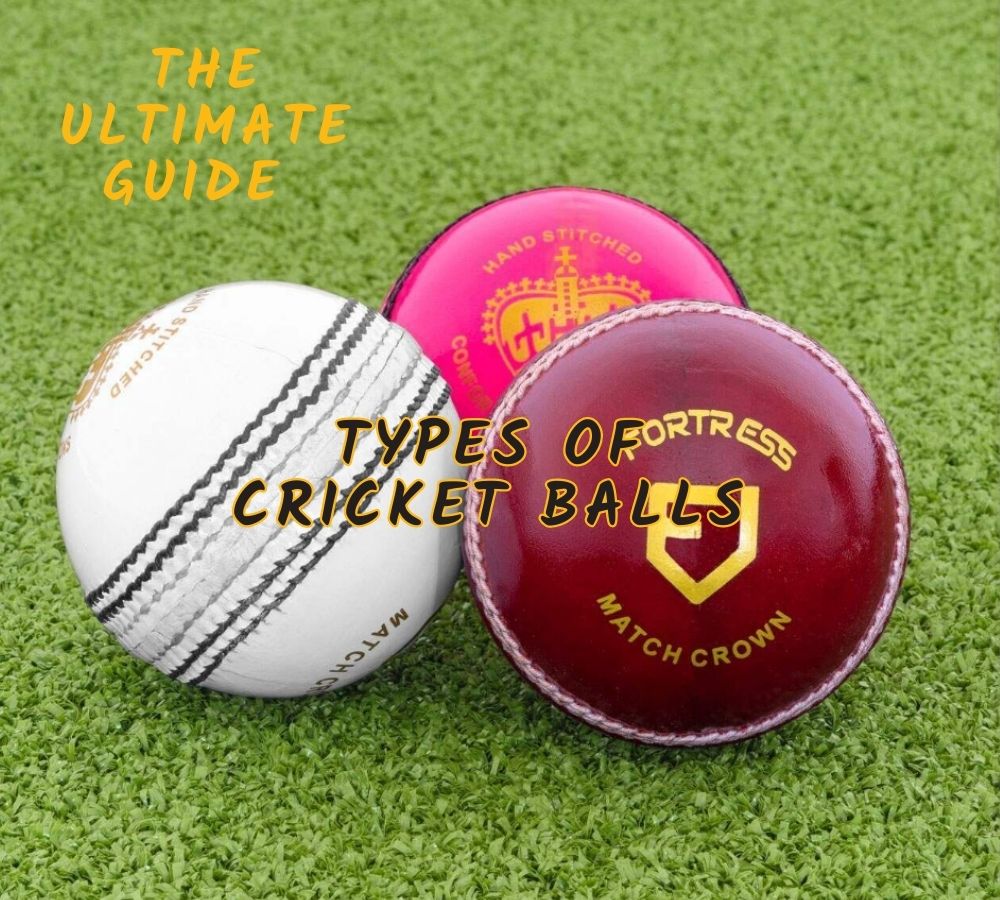Cricket is a fast-paced and demanding sport, and the hands are one of a cricketer’s most important body parts.
Think about it – from catching a fast-paced ball hurtling towards you at high speeds to gripping the bat firmly while attempting a monstrous six, the fingers bear an immense burden.
Their agility, flexibility, and strength are prerequisites for success, but they are also susceptible to fractures, dislocations, and sprains.
One way to protect the fingers from injury is to tape them. Beyond its aesthetic appeal, the intricate patterns formed by these tapes serve a purpose beyond mere adornment.
This comprehensive exploration delves into the core reasons why cricketers tape their fingers. We will uncover the science behind taping, the psychological benefits of finger taping, how to tape the fingers, and other information.
So, fasten your seatbelts and dive into the captivating world of finger-taping in cricket.
Reasons Why Cricketers Should Tape Their Fingers
Taping provides initial protection to the fingers, but this is not the only reason. We have provided several purposes behind the finger taping for your reference.
1. Injury Prevention and Stability
Cricketers primarily tape their fingers to prevent injuries and stabilize the joints. The repetitive impact and strain on the fingers while catching, batting, or bowling can lead to sprains, dislocations, or fractures. Finger taping offers Support and restricts excessive movement, reducing the risk of such injuries.
For instance, when a fast-paced delivery thuds into a fielder’s hand, the impact can cause finger hyperextension or jamming. Taping the fingers provides a cushioning effect, absorbing some of the shocks and minimizing the chances of ligament damage or fractures.
2. Enhanced Grip and Control
Taping the fingers also aids in improving grip and control over the cricket bat or while fielding. The tape’s additional friction allows cricketers to maintain a firm grip on the bat, especially when facing rapid bowlers or executing powerful shots. It helps prevent the bat from slipping out of the hands during forceful strokes, ensuring better shot execution.
Similarly, when fielding, the tape enhances the fielder’s ability to hold onto the ball securely, even when diving or attempting challenging catches. The improved grip can make a significant difference between catching the ball cleanly and slipping out of the hands.
3. Finger Alignment and Joint Protection
Finger taping plays a vital role in aligning and protecting the joints. When fingers are taped together, it helps distribute the force evenly across the hand, reducing strain on specific joints and minimizing the risk of hyperextension or dislocation.
Bowlers often tape their bowling fingers to maintain proper alignment and protect them from the repetitive stress caused by the bowling action. The tape acts as a supportive mechanism, ensuring the fingers maintain the correct positioning during the high-velocity release of the ball.
4. Psychological Confidence
Apart from the physical benefits, finger taping also offers psychological advantages to cricketers. The visual presence of the tape can instill a sense of confidence in both injury prevention and grip enhancement. It creates a mental reassurance that their fingers are protected, enabling them to focus more on their performance without fear of potential finger injuries.
5. Providing Adequate Friction to the ball
Moreover, finger-taping can be a game-changer in maintaining a firm hold on the ball. It reduces the risk of the ball slipping out of a player’s hands, ensuring a more reliable and confident fielding performance. This advantage becomes particularly valuable when the ball may be slippery due to wet conditions or cold weather. However, it’s crucial to strike a balance and not go overboard with excessive taping.
How to Properly Tape Your Fingers?
Here is a step-by-step guide on how to properly tape your fingers in cricket:
Gather the necessary materials: You will need adhesive sports tape, commonly known as athletic tape, which is durable and provides good support. It is available at sports stores or online.
- Prepare your fingers: Ensure that your fingers are clean and dry before applying the tape. It helps in better adhesion and prevents discomfort.
- Start at the base: Begin by anchoring the tape at the base of your finger near the knuckle. Wrap the tape around the base several times to create a solid foundation.
- Secure the joints: Move up towards the middle finger joint, overlapping the tape slightly as you go. Wrap the tape in a figure-eight pattern around the joint, covering it completely. It provides support and stability to the joint.
- Move towards the fingertip: Continue wrapping the tape towards the fingertip, maintaining a snug but not overly tight grip. Ensure the tape covers the sides and top of the finger, providing adequate protection.
- Cover the entire finger: Repeat the process for each finger, including the thumb. Remember to tape both the front and back of the fingers, creating a complete wrap.
- Test for flexibility and comfort: After taping, check for enough flexibility to perform necessary cricket skills such as catching, batting, and gripping the ball. The tape should not restrict your finger movement excessively. Adjust the tension or reapply the tape with a slightly looser grip if it feels uncomfortable or too tight.
- Practice and adjust: Taping is a personal preference, and different cricketers may have varying techniques. Practice taping your fingers during training sessions to find the method that suits you best. Adjust as necessary to ensure optimal comfort and performance.
- Remember, while taping can provide support and protection, it is essential to listen to your body. If you experience pain or discomfort while playing, consult a medical professional for advice.
- Note: It is always recommended to seek guidance from a coach, trainer, or medical professional who can provide hands-on assistance and personalized advice on taping techniques.
Is it Legal to Tape Fingers in Cricket?
It is legal for cricketers to put tape on their fingers if it adheres to the rules and regulations set by the cricketing authorities. The International Cricket Council (ICC), the governing body of international cricket, permits cricketers to use tape on their fingers for various reasons, including injury prevention, grip enhancement, and joint support.
However, it is important to note that the opposition or umpires may question excessive taping or the use of tape to gain an unfair advantage. Umpires can intervene if they deem the taping excessive or against the spirit of fair play. The use of tape should be within reasonable limits and not contravene any specific rules or regulations set by the cricketing authorities.
Each cricketing board and tournament may have its own rules and guidelines regarding taping, so it is always advisable for cricketers to be familiar with the competition regulations they are participating in.
Do wicket keeps also tape their fingers?
Yes, it is common for wicketkeepers in cricket to tape their fingers. Wicketkeeping involves catching fast-paced deliveries from bowlers, which puts a significant strain on the hands and fingers. To provide additional support and protection, wicketkeepers often use tape to secure their fingers and minimize the risk of injury.
Taping helps to stabilize the joints, prevent excessive bending or hyperextension, and reduce the chances of fractures or sprains. It is a preventive measure employed by wicketkeepers to maintain their grip and dexterity while ensuring the safety of their fingers during the demanding role behind the stumps.
Which tape do cricketers use to tape their fingers?
Cricketers typically use a specialized sports tape known as “cricket finger tape” or “finger injury tape” to tape their fingers. This type of tape is designed to provide a combination of support, flexibility, and durability, specifically catering to the needs of cricketers.
Cricket finger tape is often made of a cohesive or non-stretch fabric material that adheres to itself without the need for adhesive, allowing players to wrap their fingers securely without the tape slipping or leaving a sticky residue.
It offers a balance between protection and mobility, enabling wicketkeepers and other players to maintain a firm grip while minimizing the risk of finger injuries.
Do empires allow finger-taping?
Empires in cricket generally allow players to use finger tape for support and protection. However, there may be specific regulations or guidelines set by the governing cricket boards or tournament organizers regarding the type and application of finger tape.
So, it is important for players to adhere to these rules and ensure that the tape does not provide any unfair advantage or obstruct the game in any way.
What is the brown tape that cricketers use?
Rigid tape is a versatile tool used by athletes, including tennis players, cricketers, and many others, to enhance grip, provide support, and limit the range of motion. Its primary purpose is to offer stability and restrict excessive movement during physical activities.




